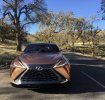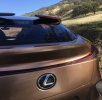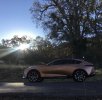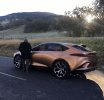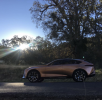maiaramdan
Expert
- Messages
- 1,836
- Reactions
- 1,423
I think with more and more information dripping out of Japan we can piece together the whole story of how GA-L failed and ruined Lexus' high end plans from the very beginning:
>> The GA-L platform was designed from the start to be very rigid in order to accommodate a 670PS+ V8TT engine for the LC/LS/LF.
>> The platform ended up being very overweight because of its traditional steel construction. Usually at this level an all-aluminum design is required to keep weight in check.
>> The change in design direction of LS to be a large sports sedan led to very poor packaging. The car needs to be very large making the weight problem even worse.
>> The GA-L platform tried to become three very different products at once: a full size sedan, a sports car and a full size SUV. This is not how modularity works. It's simpler to just design the three separately.
>> The poor packaging also meant the LS-FC is impractical. They couldn't give it enough power and have to heavily sacrifice the already insufficient interior space.
>> The three F products have to be cancelled because the cars are so heavy they will fall into a downward spiral of adding more power and even more weight to handle that power. For every car design there is a GVM limit because you don't want the car to bottom out in daily driving.
>> TNGA-F being so good at weight reduction meant a BOF LX is actually lighter than the unibody LF-1 while having more space and being much cheaper. So the LF-1 might as well be cancelled.
>> GA-N is a scaled down GA-L so all the problems with GA-L became even worse. The Crown is bigger than GS while having similar space as IS and became 100kg heavier than last gen.
>> Knowing a new generation will not be competitive they just cancelled the GS and refreshed the IS.
>> Their focus on E-AWD means GA-K is a very suitable platform for future large products and the upcoming Crown will be the first product from this new vision.
>> The faster development pace of E-TNGA and the general shift to electrification means LF-Z is a much better investment than LF-1.
@ssun30
Frankly speaking most of your points are very sane and valid but I have some other questions
1) will we see a next generation FR LS or it will be turned as well to FF or totally ditched?
2) same question as 1 but regards to LC?
If we knew those questions we will be able to know the future of the LF-1
As maybe just maybe they will have a new FR or maybe there's GA-L / GA-N - II or maybe they are already working with Mazda on something totally new
So if any of the aforementioned this means the LF-1 still has a very good opportunity of not either they will be ditching or shifted to FF with Yaris GR like system then LF-1 we can say both LF-1 and even the LC are ditched


